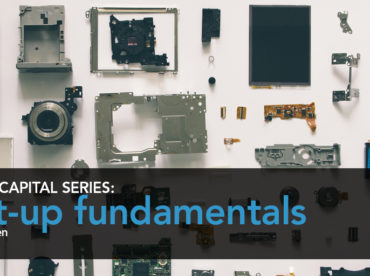Over a decade of entrepreneurial activity in “hard” technologies has left me with a deep repertoire of demo horror stories. I have had boxes blow up, catch fire, over-heat and over-cool, human failure, device failure and some that felt like divine failure. You name it, I’ve suffered it. Maybe that just means that I am a bad technologist, but I like to think that it is the result of a two personal mantras instead:
Perfect is the enemy of “Good Enough”
Get feedback early and often
I have always believed that it is better to get customer or strategic feedback on a new technology *before* you have turned it into a complete product (“complete” has no well-defined meaning in a disruptive new technology in the first place). Early feedback allows you to optimize your development strategy and might even bring in some initial revenue. Steve Blank and Eric Ries have turned this approach into a science of sorts, so I won’t belabour the benefits of customer development. It sounds great and works great. Except that you are leaving the building with incomplete crap.
The customer development crowd talks about the latter aspect a lot less – partly because of their focus on the web/software world. You can mock up a website and demo a big portion of the concept. Not so with hardware! There was no viable “photoshop mock up” of LED TV when we first pitched the concept. For starters, we were promising unheard of image contrast. Showing that on any current projector, TV or laptop was akin to advertising colour TV with black-and-white monitors. We ended up building “simulators” with a modified DLP projector behind an LCD panel.. Optically that was the equivalent of future LED TV so we got a “mock-up” of the visual quality achievable with this new device class. Except that pitching the “next flat panel TV” to potential customers/partners/investors with a 6′ deep demo requires quite a dance (we called the demo the “coffin” for a reason).
A lot of extremely talented inventors lack the confidence to show incomplete demos. I see this a lot and my usual response isn’t a customer development lecture but a story from my own demo days. These stories, while often scary, hopefully provide the inventors with a bit more confidence: I did this, many things went horribly wrong, but the end result was still good.
As I am learning from blogging masters like Mark Suster, blogs are a place to store these kinds of “often repeated stories”. Thus a new category of “Demo Wars” is born. I will start with a quick one and add more over time. Maybe these inspire some of you hardware folks to go out into the demo world.
Keeping your Cool
Shortly after the “Coffin”, we puzzled together our first true LED prototype. We used LEDs used in flashlights for lack of other options. Cutting leads and soldering 2000 LEDs left me with a permanent aversion to electronics work (and likely some brain damage from the fumes…). Absent dedicated LED control chips, we had the entire system run on analog designs. That design, and I am sure several implementation flaws, made the display as temperamental as my two year old. Specifically, the LEDs would start to flicker and buzz like crazy at any temperature below 40C or above 45C. For a display sucking over a kilowatt of power and using only “hope this work” cooling, that temperature band is absurdly small and the failure mode was truly spectacular.
That’s what we had. We also had an opportunity to showcase our invention at the largest technical conference on display. Of course we went!
Our talk at the conference generated a lot of interest so we had a crowd waiting at our demo booth. This is when it got tricky. I would put my jacket over the unit while people were gathering in anticipation. Holding the jacket allowed me to feel the rising temperature of the system (jacket blocking airflow). Once it felt like 40C or higher, the jacket would come off and everybody went “wow”. This would last for about a minute and then the display would push past the upper limit of its thermal envelop. For that scenario I had a bottle of spray coolant in my other hand behind the display. A gentle spray and the unit would drift down a few degrees again. Overshoot the coolant and the jacket came back on. And so forth. For hours…
I was a nervous wreck afterwards but learned my first really important lesson: Nobody commented about the stuff I did behind the curtain (or behind the jacket as it were). I think most people didn’t even realise what was happening and others just didn’t care. I even got the odd questions about “the next exclusive showing” (i.e. the jacket being removed). Instead, we have hundreds of display industry leaders gather in front of the display over time. The device had a fairly narrow viewing angle of about 30 degrees and I still remember seeing a tight crowd of people wedged tightly into the narrow cone, standing up to 10 people deep all the way into the booth of the booth across the hallway.
Go out and get feedback – no matter how awkward it might feel!



